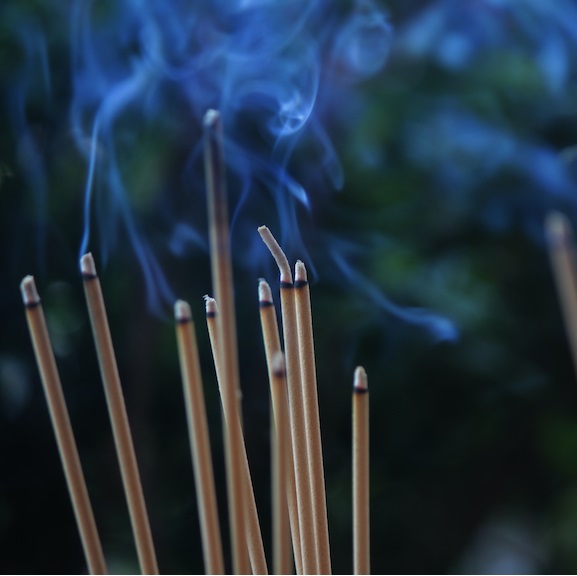We use cookies to make your experience better. To comply with the new e-Privacy directive, we need to ask for your consent to set the cookies. Learn more.
Unlocking the Mysteries of Incense Sticks: An All-Inclusive Guide
Unlocking the Mysteries of Incense Sticks: An All-Inclusive Guide
Incense sticks, with their entrancing aroma and calming presence, have been an integral part of various cultures and spiritual practices for centuries. This guide will delve deep into the captivating world of incense sticks, exploring their rich history, various types, and multitude of uses. We'll also showcase some popular brands like Satya Nag Champa and Juicy Jay's, adding a touch of exclusivity and quality to your incense experience.
History and Origins of Incense Sticks
Ancient Traditions
Incense sticks have an intriguing history, dating back to as early as 6000 BC. The practice of burning incense originated from ancient civilisations such as Egypt and Greece and gradually spread to regions like India and Southern Asia. In these societies, incense was used in religious rituals, as offerings to gods, and even as a tool to ward off evil spirits.
Global Influence
Over the centuries, the use of incense diversified and evolved across different cultures. For instance, in ancient China, incense was used to measure time and make offerings in temples. The Japanese developed their unique blends with an emphasis on subtlety and refinement, using incense to purify sacred spaces and during traditional tea ceremonies.
Types of Incense
Incense Sticks
The most common form of incense, these slender sticks are typically made of a bamboo core coated with aromatic materials. They offer a cost-effective and easy-to-use method for creating a fragrant atmosphere, making them a popular choice for many.
Incense Cones
Incense cones, like sticks, are made by wrapping aromatic materials around wooden sticks. However, they are shaped into cones and do not require a specific holder. They burn for longer periods, making them ideal for extended periods of meditation or relaxation.
Incense Resin
Incense resin is derived from natural substances such as copal, myrrh, and frankincense. It is burnt on charcoal and has a reputation for its intense aroma. Incense resin is popular amongst enthusiasts for its traditional and authentic feel.
Components of Incense Sticks
Natural Essential Oils
These oils are extracted from different plants, flowers, and resins and are responsible for the rich and long-lasting scents of incense sticks. Some popular essential oils used in incense include sandalwood, frankincense, and myrrh.
Wood Powder
Wood powder acts as a combustible base material in incense sticks. It is often made from soft, fragrant woods such as sandalwood or agarwood.
Gum Arabic
This natural resin derived from the Acacia tree acts as a binder in incense stick composition. It helps hold the other materials together, ensuring a stable and even burn throughout the entire stick.
Makko Powder
Derived from the bark of the Tabu-no-ki tree, Makko powder is another vital component in the production of incense sticks. It is a natural and odourless binder that enables the incense to burn evenly and consistently.
The Multitude of Uses
Aromatherapy
Aromatherapy is a popular practice that uses essential oils to improve physical, emotional, and mental well-being. Incense sticks can enhance this experience by providing a soothing and calming atmosphere.
Meditation
Meditation is a practice that helps you calm your mind and connect with your inner self. Essential oil incense sticks can greatly complement your meditation sessions. The fragrant aroma from the incense sticks can aid in enhancing focus and concentration while you meditate.
Religious Rituals
Incense sticks have a profound historical significance in various cultures and religions. They have been used for centuries in religious ceremonies, spiritual practices, and daily life. Their unique aroma and the symbolism associated with them have transcended cultural boundaries and continue to be an important aspect of human spirituality.
Decor and Ambiance
Incense sticks can add a pleasant fragrance to your home and can also be a beautiful addition to your home decor. Select a holder that fits your incense sticks' size and style. Some holders also include storage compartments for unburned sticks, ensuring that your collection stays organised and readily available.
Incense Safety Precautions
Asthma and Respiratory Health
While the soothing scents of incense can create a relaxing atmosphere, it's essential to prioritise respiratory health, particularly for individuals with asthma or other respiratory conditions.
Toxicity
It's essential to use high-quality incense from reputable sources, as low-quality incense sticks may contain harmful substances.
Usage Tips
Make sure your incense burner is placed on a stable surface, away from flammable objects and materials. Ventilate the room by opening windows or doors to allow fresh air to circulate. Never leave burning incense unattended.
Recommended Brands
Satya Nag Champa
Satya Nag Champa is a popular brand known for its high-quality incense sticks. Their unique blend of rare herbs, flowers, resins, and essential oils gives their incense sticks a calming and soothing aroma.
Juicy Jay's
Juicy Jay's is another renowned brand that offers a range of aromatic incense sticks. Known for their long-lasting fragrances, Juicy Jay's incense sticks are a favourite among incense enthusiasts.
Conclusion
Incense sticks, with their enchanting aroma and calming influence, have a rich history and a multitude of uses. Whether you wish to create a relaxing atmosphere, meditate, or simply enjoy pleasant fragrances, incense sticks like Satya Nag Champa and Juicy Jay's can provide an exclusive, quality experience. Keep the safety precautions in mind, and you'll be ready to delve into the aromatic world of incense sticks.


